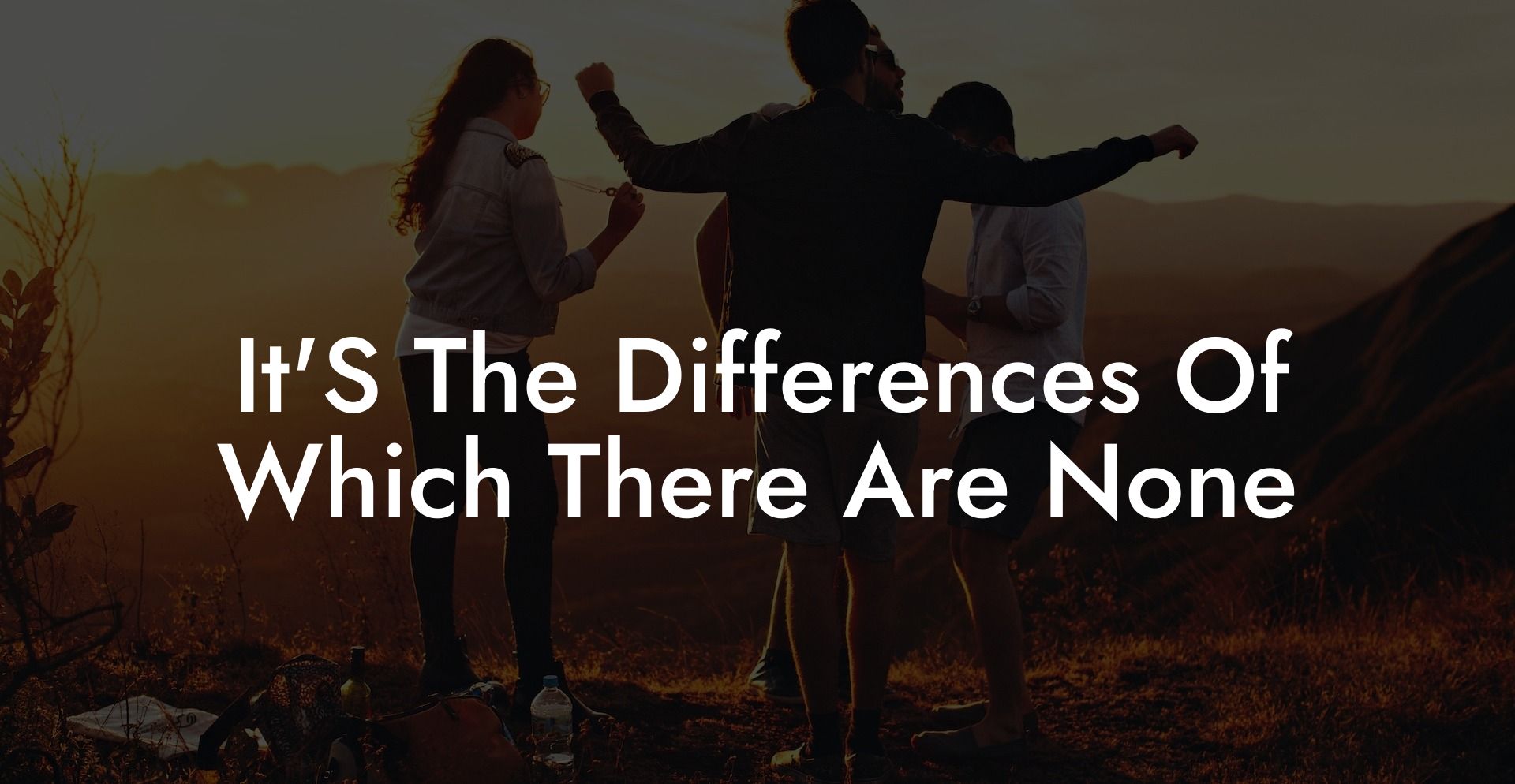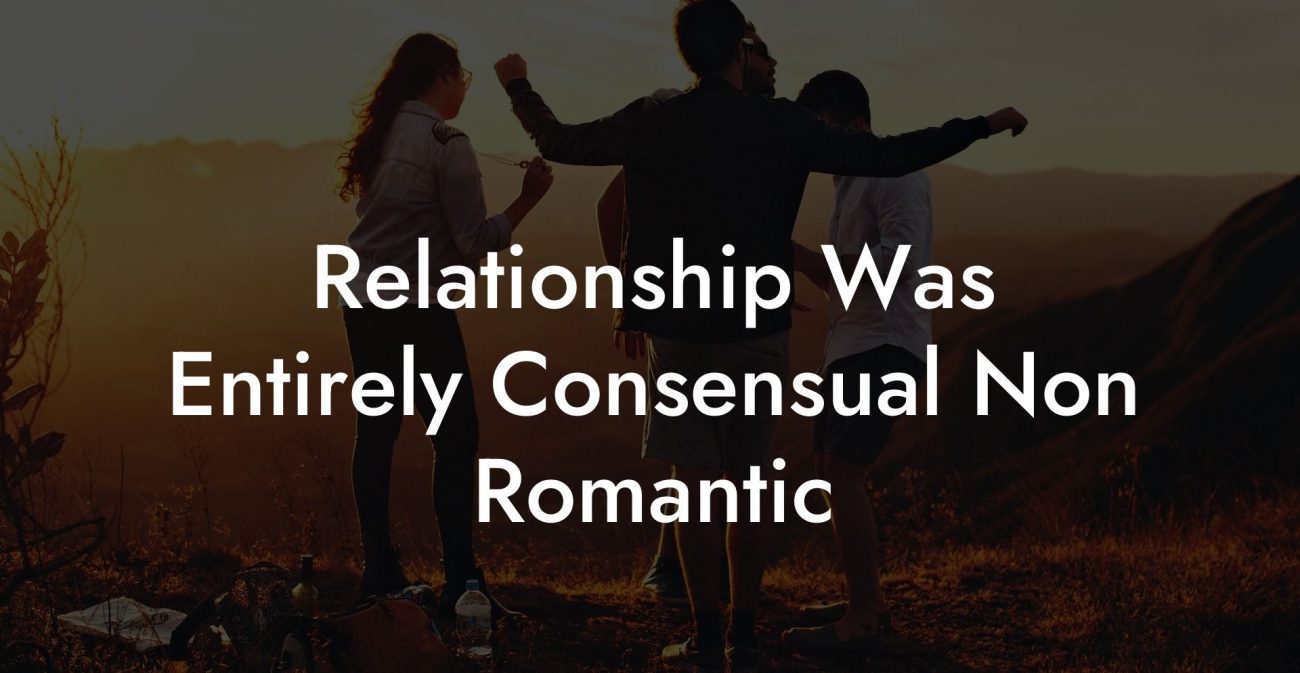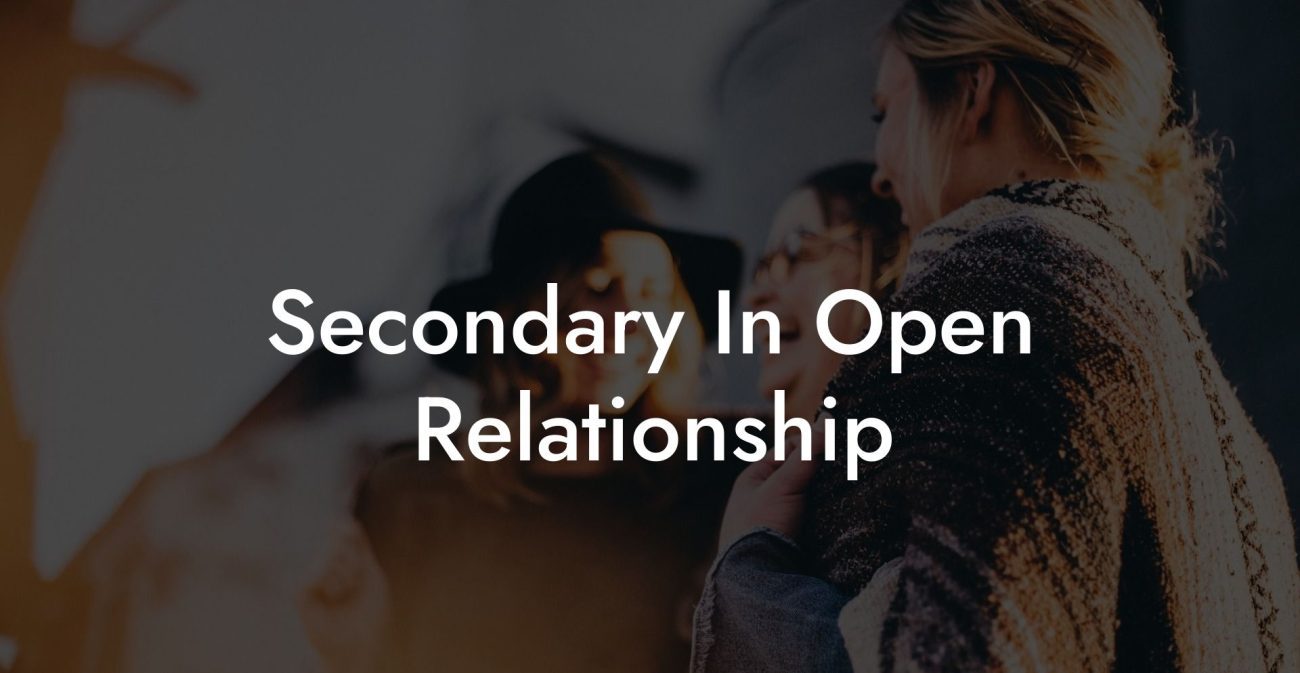In the world of relationships, the concept of monogamy, non-monogamy, and polyamory can be as complex as it is diverse. It's The Differences Of Which There Are None is an intriguing exploration into these realms, shedding light on the nuances, misconceptions, and various perspectives on the matter. This article will guide you through the intricacies of these relationship styles, helping you understand what makes each unique while also emphasizing their ultimate aims – love, trust, and commitment.
It'S The Differences Of Which There Are None Table of Contents
Defining Monogamy, Non-Monogamy, and Polyamory
Before diving into the distinctions between relationship styles, let's define monogamy, non-monogamy, and polyamory.
Monogamy
Monogamy refers to a type of committed relationship where two individuals choose to be exclusively involved with each other romantically and/or sexually. This can be seen as the "traditional" relationship style, where emotional and sexual connections are limited to one's partner.
Non-Monogamy
Stanford the concept of relationship structures that do not restrict individuals to a single partner. Non-monogamous relationships can encompass various forms such as swinging, open relationships, and polyamory.
Polyamory
As a subset of non-monogamy, polyamory is the practice of being open to engaging in multiple romantic and/or sexual relationships simultaneously with the consent and knowledge of all involved parties. This means establishing connections with more than one partner, often with a focus on emotional intimacy and sexual exploration.
Breaking Down The Differences
Now that we have established what each relationship style entails, let's consider the contrasting elements between them.
Monogamy Vs. Non-Monogamy
- Exclusivity: The most apparent difference between monogamous and non-monogamous relationships is the level of exclusivity. In monogamous relationships, individuals commit solely to one partner, while non-monogamous relationships allow for multiple connections.
- Societal Norms: Monogamous relationships are often perceived as the "norm" or default. Non-monogamous relationships can be stigmatized or misunderstood as they diverge from traditional ideas of commitment.
- Fulfillment of Needs: Monogamous partners rely on each other to fulfill romantic, emotional, and sexual needs. Non-monogamous relationships allow for various partners to fill different needs, leading to a diverse range of experiences and connections.
Non-Monogamy Vs. Polyamory
Non-monogamy and polyamory share the idea of being open to multiple partners. However, they can differ in terms of structure, dynamics, and goals.
- Emotional Connections: Polyamorous relationships place a heavy emphasis on creating deep emotional bonds with multiple partners, while other non-monogamous relationships (like swinging) may prioritize sexual exploration over emotional intimacy.
- Structures: Polyamorous relationships can take various forms, including hierarchical (where there is a primary partner and secondary partners), non-hierarchical (where partnerships have equal importance), and solo polyamory (where an individual prioritizes their autonomy). Non-monogamous relationships may have less-defined structures such as casual dating or sexual encounters without any focus on emotions or long-term commitments.
It'S The Differences Of Which There Are None Example:
Consider a couple, Alice and Bob, who are in a monogamous relationship. They are committed to being each other's sole romantic and sexual partners. In contrast, Charlie and Dana are in a polyamorous relationship, where they have respective partners with whom they share emotional intimacy and sexual connections. Both Alice and Bob, as well as Charlie and Dana, value trust, respect, and love for each other. The main difference lies in the number of partners involved and the relationship dynamics.
Despite the differences found within monogamy, non-monogamy, and polyamory, the foundation of these relationship styles remains grounded in love, trust, and commitment. Understanding these distinctions and similarities is key to appreciating the diverse ways love can manifest and evolve. We hope this article has provided you with valuable insights into these relationship styles and encourages you to share the knowledge, as well as explore more guides on The Monogamy Experiment.













